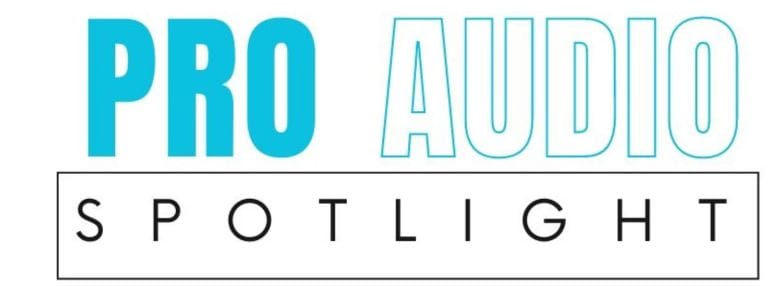The Many Lives of Paul Novotny
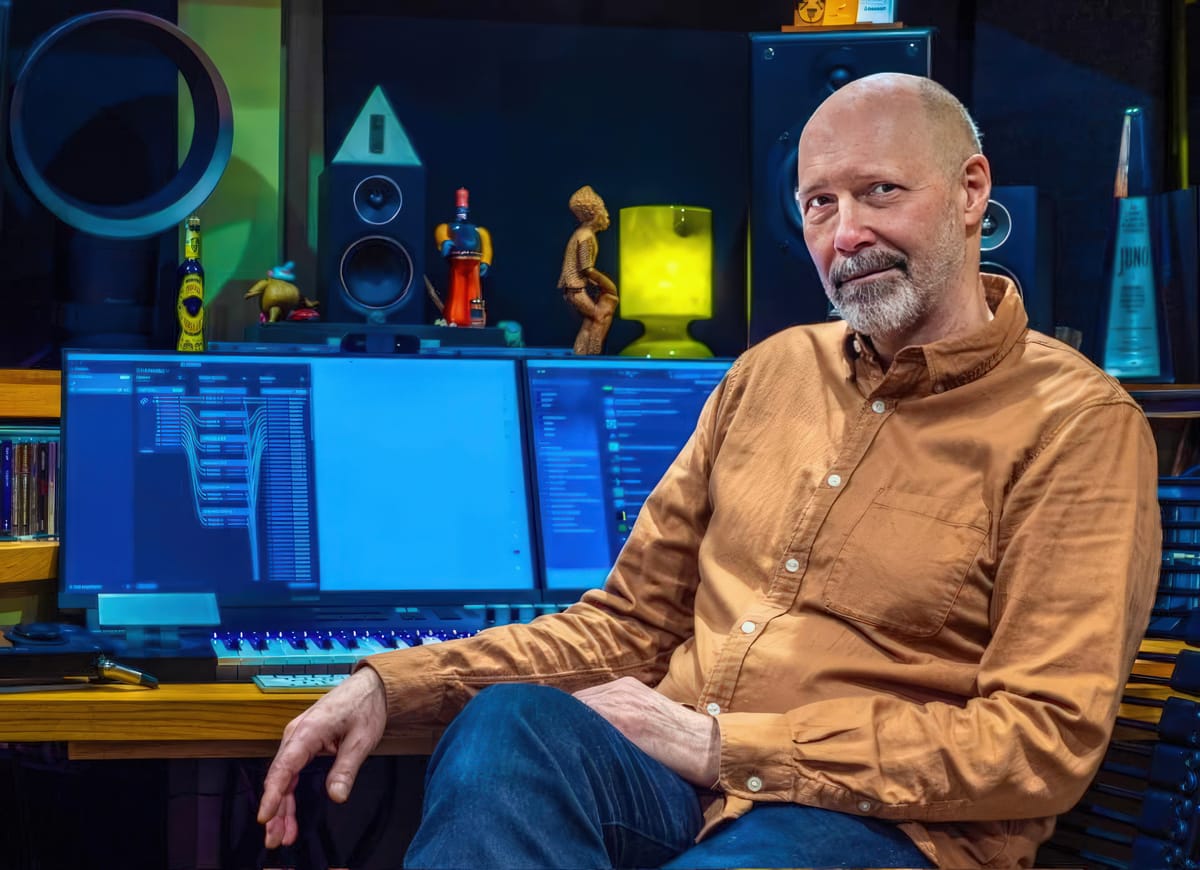
By Jim Norris
In his 40-year career, Canadian bassist, composer, music producer, author, educator, and innovator Paul Novotny has performed with such eminent international jazz artists as Kenny Wheeler, Geoff Keezer, Cedar Walton, Junior Mance, Jo‑Anne Brakeen, and singers David Clayton Thomas, Roger Whitaker, Jackie Richardson, Ranee Lee, and Holly Cole.
As a bass artist, composer, and co-leader with pianist/composer Joe Sealy, Novotny produced five recordings from 1989 to 2009, two of them were nominated for Juno Awards, Dual Vision in 1994, and Blue Jade in 1999.
He performed with the Holly Cole Trio at the Japanese Grand Prix Golden Disc Awards when they won awards for Best New Artist and Best Jazz Album (1993); produced jazz singer Carol Welsman’s Juno Award-nominated debut recording Lucky to Be Me, which via an endorsement from David Foster led to a performance at Club Blue Note in Jakarta, Indonesia (1995); produced Joe Sealy’s Juno Award-winning Africville Suite (1996); cowrote songs with Molly Johnson (2004) and Dan Hill (2009); and produced, performed on, and released Barbra Lica’s sensational debut album That’s What I Do, which hit Number 1 on the Canadian iTunes Jazz Chart and was released in Japan by Universal Music (2012).
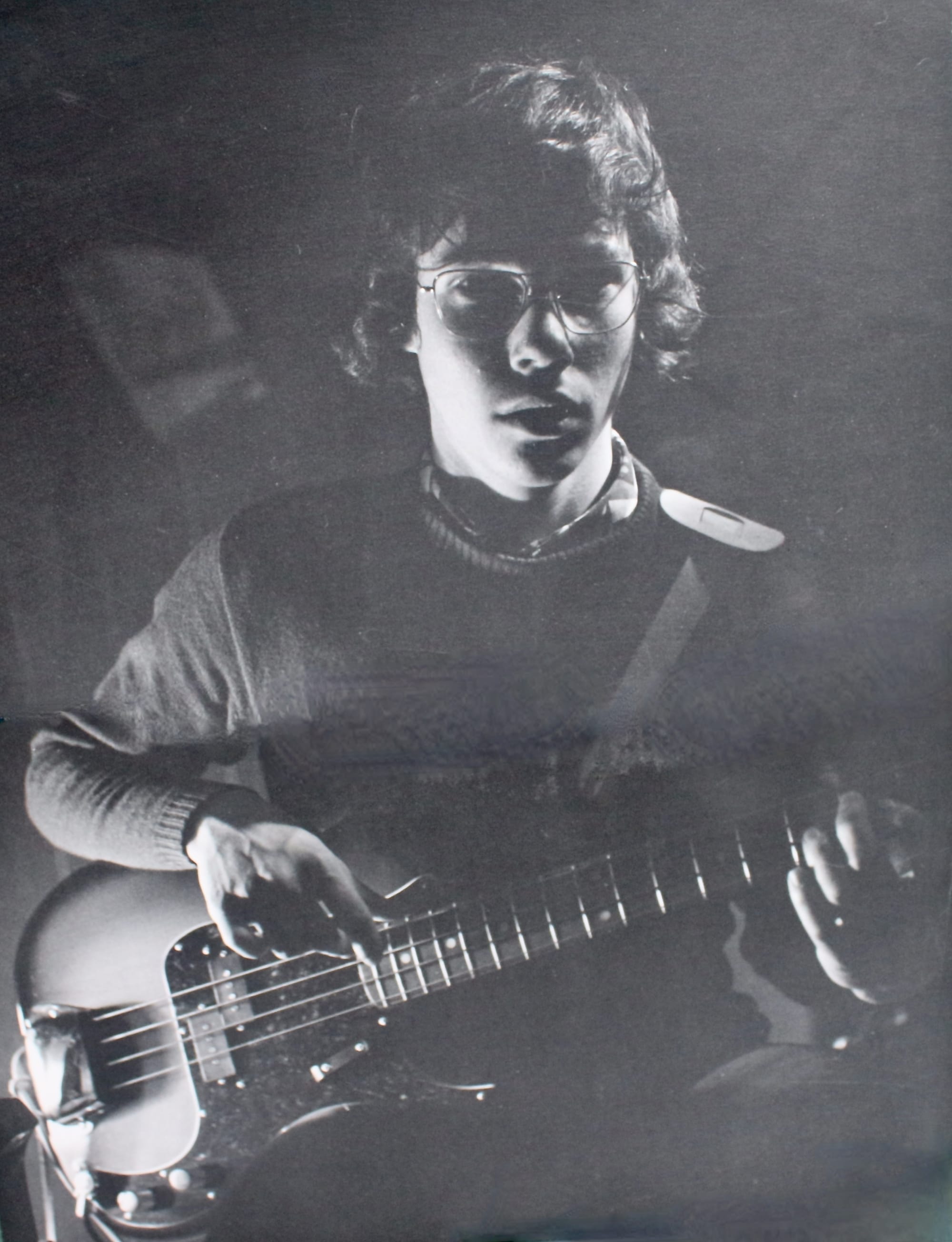
As a bandleader, Novotny has produced two duo recordings with Oscar Peterson protégé Robi Botos: Look Ahead (2015) released in Hi Definition 5.1 surround sound, and Summertime in Leith, (2022) released in the Dolby Atmos Music format, the latter receiving a 5-out-of-5 rating from 78 international media outlets in 18 countries.
As an audio producer, composer, and performer, Novotny has created music and sound design for numerous commercials, feature films, and television franchises including: The Canadian Broadcasting Company’s The National (2001) and The Hour with George Stroumboulopoulos (2004), and Newsworld’s News Now (2005). He performed upright bass on the soundtrack for the internationally acclaimed, multi-platinum award winning Cuphead video game (2017), and its sequel which appears to be headed for release in 2025/26.
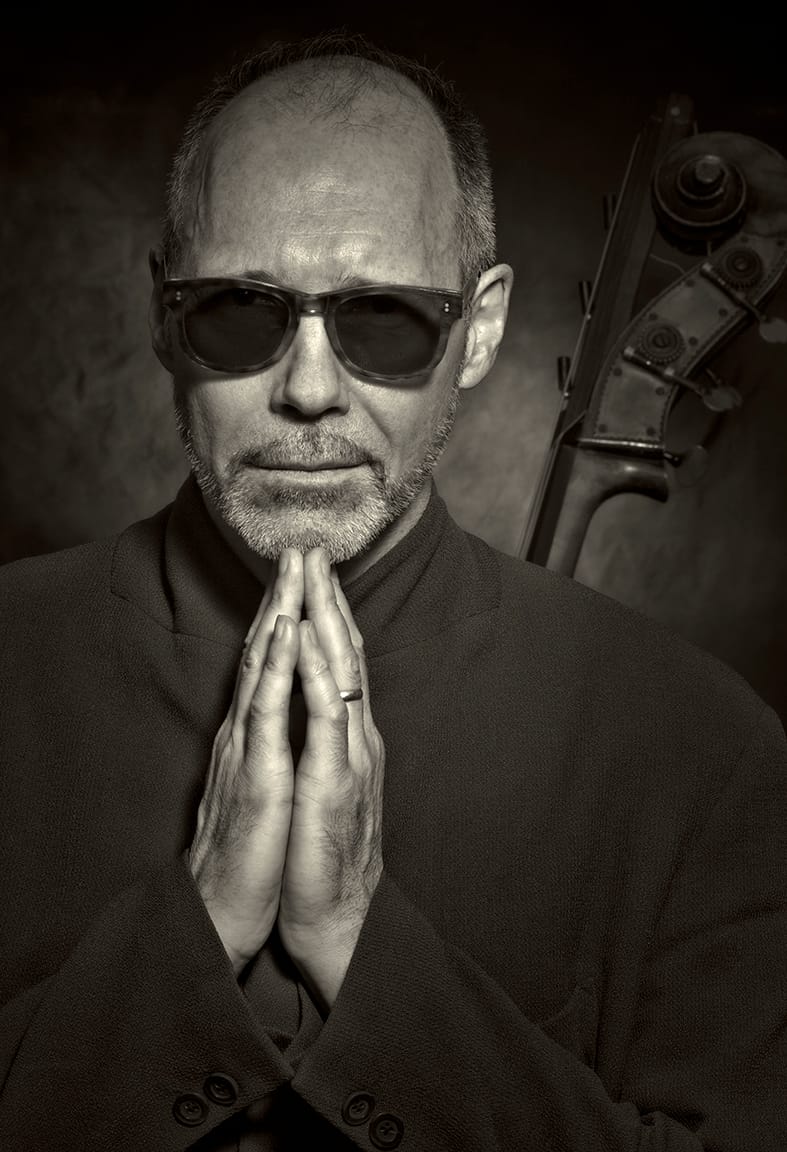
In 2016, Novotny became a certified Apple Digital Music mastering engineer, and earned his MA in music composition from York University the following year. Presently, his musicology/technology, and production-based PhD research explores the 3D Dolby Atmos Music format by introducing an innovative philosophy and studio design benchmark that offers independent music creators’ large operational scope within a small scale, affordability, and premium quality. This research is published by Routledge Taylor Francis UK in the series titled Innovation in Music, Cultures and Contexts (2024).
Novotny is on the faculty of Centennial College, Toronto, and on the pedagogical educational advisory committees for The Les Paul Foundation, Neumann, Eventide, OekSound, Bettermaker, and Sonarworks.
As an elected board member of the Screen Composers Guild of Canada, Novotny has testified as an expert witness at two Heritage and Industry Science and Technology Government of Canada standing committees regarding fair copyright remuneration models for 21st-century media streaming.
I was fortunate enough to grab a few minutes of Paul’s time and discuss his many lives and his recent accomplishments with Dolby Atmos.
Jim Norris
You started performing or learning to play music when you were five, which is a few years ago. And I think that was piano to start with. And then a few other instruments. I guess one question is, do you feel that piano is a good instrument for everybody to learn?
Paul Novotny
In my opinion it's the backbone for music composition because, at your fingertips, you have the entire spectrum of the orchestra from the deep basses to the high woodwinds. It's a percussive, melodic, and harmonic instrument, so yeah, for me everything starts there. My regret would be that I did not take piano more seriously between the age of five and ten and study it more diligently. But I was already sort of a little bit over-vibrant, if you will, and interested in many things, specifically freestyle skiing. But yeah, for sure piano is still a big part of my music creation and I have a beautiful Yamaha C7 which Marc Decorte keeps in excellent condition for me.
Jim Norris
So you studied music at Humber College in Toronto?
Paul Novotny
Yes, it got me focused with effective pedagogy and how to approach learning music, not just the bass. But most importantly, it introduced me to a cohort of colleagues who I still perform and work with to this day. They are some of the most eminent musicians in the country, and globally too. So yes, music school is often great in that way; your school colleagues often become your career colleagues.
Jim Norris
And then you've gone on and furthered your education at York University.
Paul Novotny
Yes, but it’s important to note that the most important parts of my training came from experience which prepared me for graduate work. After Humber, in 1979 I got called to go back to my hometown of Peterborough and play with the legendary Canadian pianist Brian Browne, who won the 1971 BMI song of the year award for his piece “Morning, Noon and Night-time too.” Brian also wrote the well-known 1975 A&W, The Great Root Bear theme song, a tuba melody that when heard once becomes an earworm. Brian studied with Oscar Peterson at his Advanced School of Contemporary Music in Toronto and then went on to be known for his deep swinging piano trio style and funky version of the song The Letter, released in 1969, selling over 50,000 units, produced by Brian Ahern for Capitol Records Canada.
In 1978 Brian opened a restaurant in Peterborough called Peppers, and he needed a bass player. After Humber I was living in Toronto, and he called to ask if I’d move back to Peterborough to play in his trio? Without hesitation I said yes as I was a fan of his music, specifically his version of The Letter. I spent the following three years playing five nights a week with one of the finest masters of melody, harmony, and groove that any emerging bassist could imagine. This experience gave me essential musical experience and taught me much of the Great American Songbook. People like Pat Riccio, (iconic Canadian music producer) and a young Greg Wells would come into Peppers to hear us play. Greg became a good friend and is now a Grammy award-winning Los Angeles based music producer, multi-instrumentalist, recordist, and mixer who continues to champion Canadian culture. He recently bought an Anglican church in Winterton Newfoundland to transform it into a music venue. There were others like Rob McConnell, Don (DT) Thompson, Eugene Amaro, and Norm Amadio who would travel from Toronto to sit in. On Thursday nights we recorded a weekly radio show for broadcast every Friday night at 7:00 pm and Kawartha Lakes cottagers would listen to our music as they drove up to the lake for the weekend. It was a vibrant local scene; my point is that the experiential method of learning is most essential and institutional learning augments it. I left Peterborough in 1982 for Toronto and quickly made my way into the scene playing with Haygood Hardy, Joe Sealy, and other eminent musicians. I diversified by playing on recording sessions and touring for three years with Kenyan-born British singer-songwriter Roger Whitaker. By 1985 I wanted to get off the road, that's when I situated in Toronto permanently and pursued a career in music composition and audio production for screen media. In 1985 the extraordinary guitarist Pat Coleman and I started Interplay Productions to create music and sound-design for commercials, television shows and feature films. Significant learning came to me in our advertising work; for 2 years I worked closely with Dick Halligan (trombonist, arranger, and co-founder of Blood Sweat & Tears) on Mattel TV commercials via Ogilvy and Mather in Los Angeles. From Dick I learned how to compose music with clarity. That experience was incredibly valuable.
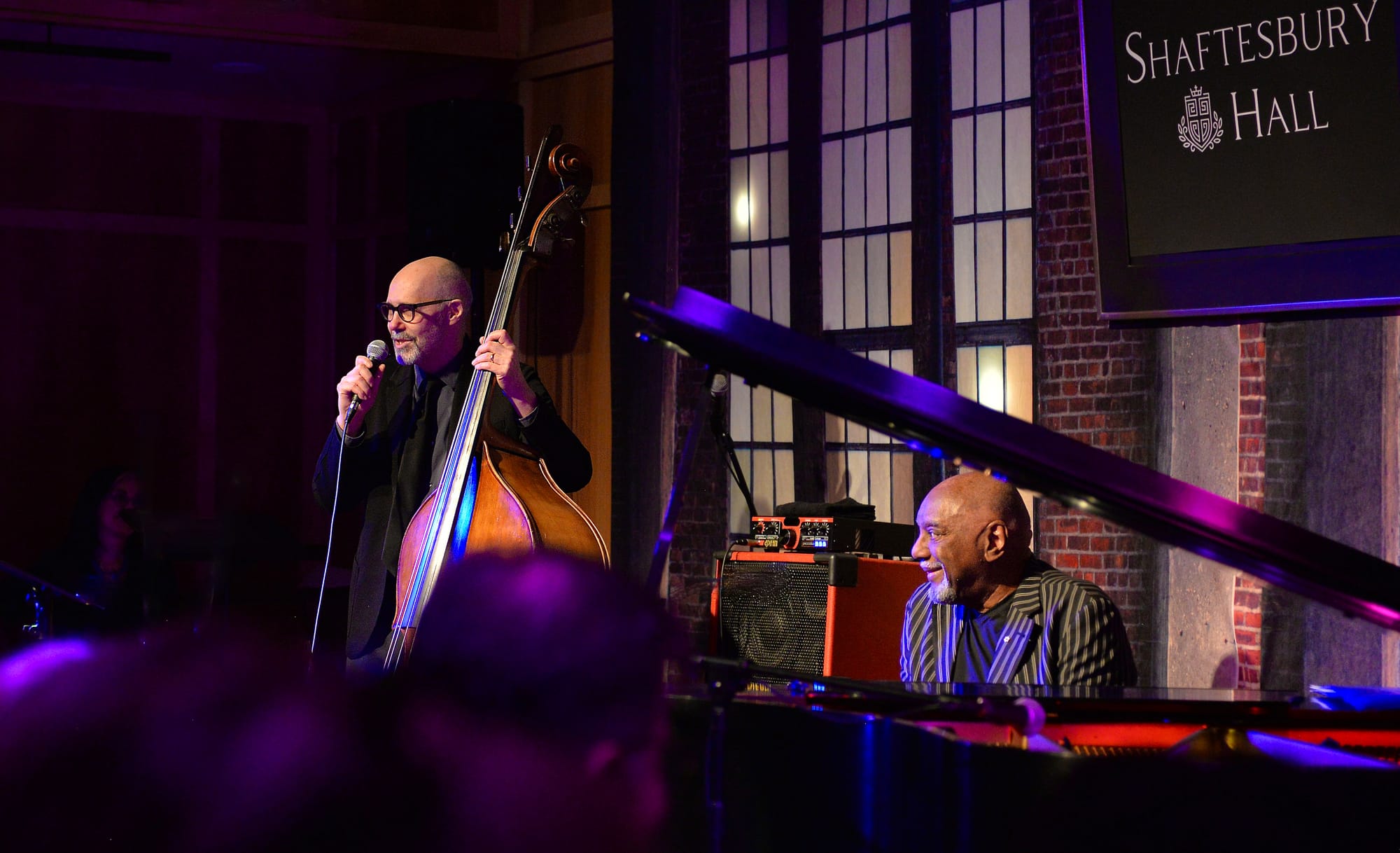
After Interplay, in 1991 I started my own company called The Audio Producers Inc. and then in 1994 formed Triplet Records (originally called Seajam) with my great music/business partner Joe Sealy. Between 1994 and 1999 our label had earned 3 Juno nominations and a Juno win with the Africville Suite. Starting in 2001 I worked in the CBC National newsroom as a composer for about 5 years. During that time, I was also doing audio-post for TV in 5.1 surround sound and over 15 years I mixed and mastered hundreds of episodes for shows on HGTV, W Network, CBC, CTV, Discovery etc. At an early age my brother George Novotny instilled the fundamentals of audio engineering and video/audio post-production. I always watched editors and engineers very closely, great engineers like Chad Irschik, Gary Gray, Mike Jones, and Hayward Parrott were role models for craft and professionalism.
After a career of working in these diverse capacities of composition, production, engineering, studio and concert performance, the record business, and business ownership, in 2015 I said, well I never really got to the level I aspired to with my own formal music education, so I began work on a master's degree in music composition at York University. During that period, I studied composition, orchestration and arranging with Dr. Norman Ludwin, a Los Angeles based orchestrator who worked regularly with American film composer Michael Giacchino. Once I finished the MA in 2017, I wrote a paper for the Art of Record Production (ARP) conference. With support from Canada Council, I went to Stockholm and presented it at the Royal College of Music in their amazing multi-speaker sound dome called Lilla salen. The paper was titled, Creating an Immersive Fold-Out and it described the process of up-mixing music from stereo to 5.1 surround sound. The paper referenced Look Ahead, which was my first recording as a bandleader featuring Oscar Peterson protégé Robi Botos. The presentation was peer reviewed and the paper was published in the conference journal JARP. In Sweden I met a vibrant international community of like-minded professional music practitioners and educators. That experience got me interested in doctoral work, so I began a PhD at York University in 2018. My topic involves ‘Dolby Atmos—the Musicology, Technology, and Pedagogy.’
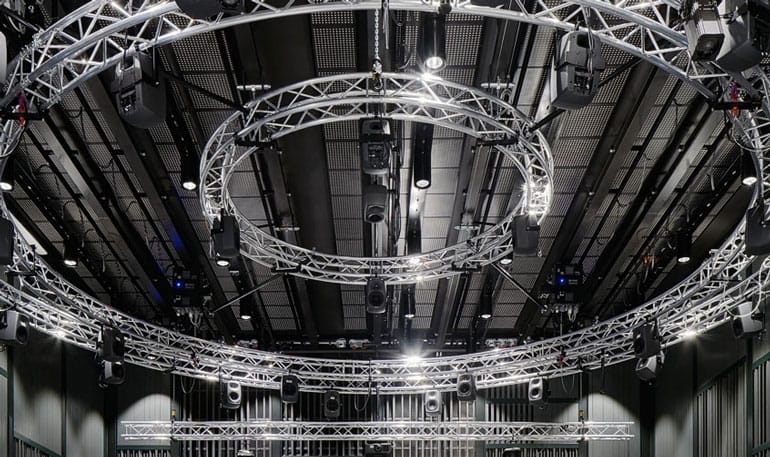
Check out: www.kmh.se/om-kmh/boka-konferenslokal-i-stockholm/lilla-salen—flexibel-intim-och-hogteknologisk.html
Jim Norris
So do you do most of your work in your own studio? Or do you work in other commercial studios as well?
Paul Novotny
I've worked a lot in other commercial studios over the years, but I've always had my own studio. And, you know, I did that because the economics made sense. Between 1985 and 1990 Interplay was located at 409 King St. West in Toronto. At 409 we were doing national commercials, and we were among the first jingle music/audio production companies in Toronto to integrate a well-built recording control room into our office. I worked with the legendary Rick Austin on designing the electronic floating ground system, and that is when I first started to learn about building studios. Since then, I’ve built another five and have routinely involved Terry Medwedick of Group One Acoustics. At 409 we had a Fostex 16 track, a two-track master machine, slaved to and a ¾” video deck. At that time a tape-lock system in house was cutting edge. I also had a nice Soundcraft desk which I had modified with military grade components to operate with headroom comparable to a Neve, and we had some Neumann U-87 microphones. The other jingle companies were routinely still going to Manta, Sounds Interchange and Amber, the three predominant recording studios in Toronto at the time. We also hired those studio’s but with my engineering skills and the available technology, we could bring a good part of the project budget home and make our in-office studio a reliable profit center. In retrospect in-office studio operation quickly became normalized. The technological affordances made it possible, and today that's even more the case. The necessity to go to a big studio for large ensemble tracking remains, but now a musician can have an in-the-box (ITB) mix room in their house, and even work in Dolby Atmos on headphones, followed by a field trip to a calibrated 7.1.4 Atmos room for quality control through speakers.
Jim Norris
So, if a studio doesn't have Dolby Atmos now, what is your advice? What's involved as far as hardware and software from the studio point of view?
Paul Novotny
Well, that's a big question, perhaps best answered from philosophical, economical, technological, and practical perspectives. My advisement is to take Atmos seriously, I don’t believe the format is going away, it’s growing rapidly, so if you are in this business to stay, you must embrace the 3-D audio future that this technology affords. Music schools must commit financially with infrastructure and pedagogy to train the next generation of 3-D music creators. The novel pedagogy associated with Dolby Atmos is also what I’m developing in my PhD research. My published chapter in “Innovation in Music, Cultures and Contexts”, (Routledge Taylor Francis Group, 2024) answers your questions in some detail, but I’ll discuss key aspects here.
My “Hyper Nearfield Tiny Studio” (HN-FTS) presents a novel philosophy and benchmark. It’s a durable, practical, and economical solution for a large scope, small scale premium Atmos control room, aimed at professional studios, educational institutions, and independent professionals who want to build a reliable Atmos room for a sole practitioner to mix and master in. Every Atmos room has an A-, and B-chain, and what I call a QC-chain. The A-chain involves software and computer, the B-chain involves AD/DA hardware, speaker controller, room calibration, speakers, and power amps, and the QC-chain is what engineers use to check their mixes against role models in the marketplace. My HN-FTS has achieved an extraordinary response curve that is even better than larger size Dolby listed rooms. This has been verified by Ed Segeren, a renowned Toronto based electroacoustic engineer who has designed, built, and calibrated multi-channel mix room theatres in Los Angeles, New York, and Toronto for decades. Dolby’s technical consultant Emma Brooks heads up onboarding of Atmos rooms worldwide; she is impressed, and as well the HN-FTS uses Sonarworks for calibration and Krišjānis Geidans from Sonarworks is over the moon with the HN-FTS aggregate room curve. Recently I gave a 1-hour Sonarworks webinar on the topic and it’s available here:

Aggregate response curve of the Hyper Near-Field Dolby Atmos Tiny Studio (Ed Segeren, December 19th, 2023)
The Hyper Near-Field Tiny Studio involves a speaker-to-ear distance of 1.2m within a rectangular room size of about 25 cubic meters, about 50% smaller than what Dolby recommends. The advantage of this size is that imaging and echolocation of audio objects is extremely precise due to a single hyper tuned mix position. At mix position standing waves are innocuous, as shown in the spectral analysis. Every centimeter closer that you bring a speaker to your ear, the less wattage you need to meet Dolby’s cinematic mix level of 85 dB + 20 dB True Peak. This efficiency reduces energy consumption and studio cost. A Dolby recommended 4-meter speaker to mix distance with active ATC or PMC speakers can cost over $130,000 so the first thing that the HN-FTS benchmark does is reduce investment in speakers and amplifiers to somewhere in the range of $5,000 to $10,000, while still achieving tonal balance at a playback level of 85 dB + 20 dB TP. So, there's the first answer to your question, and it's an important one, because that's where most of the money gets spent when you build an Atmos room.
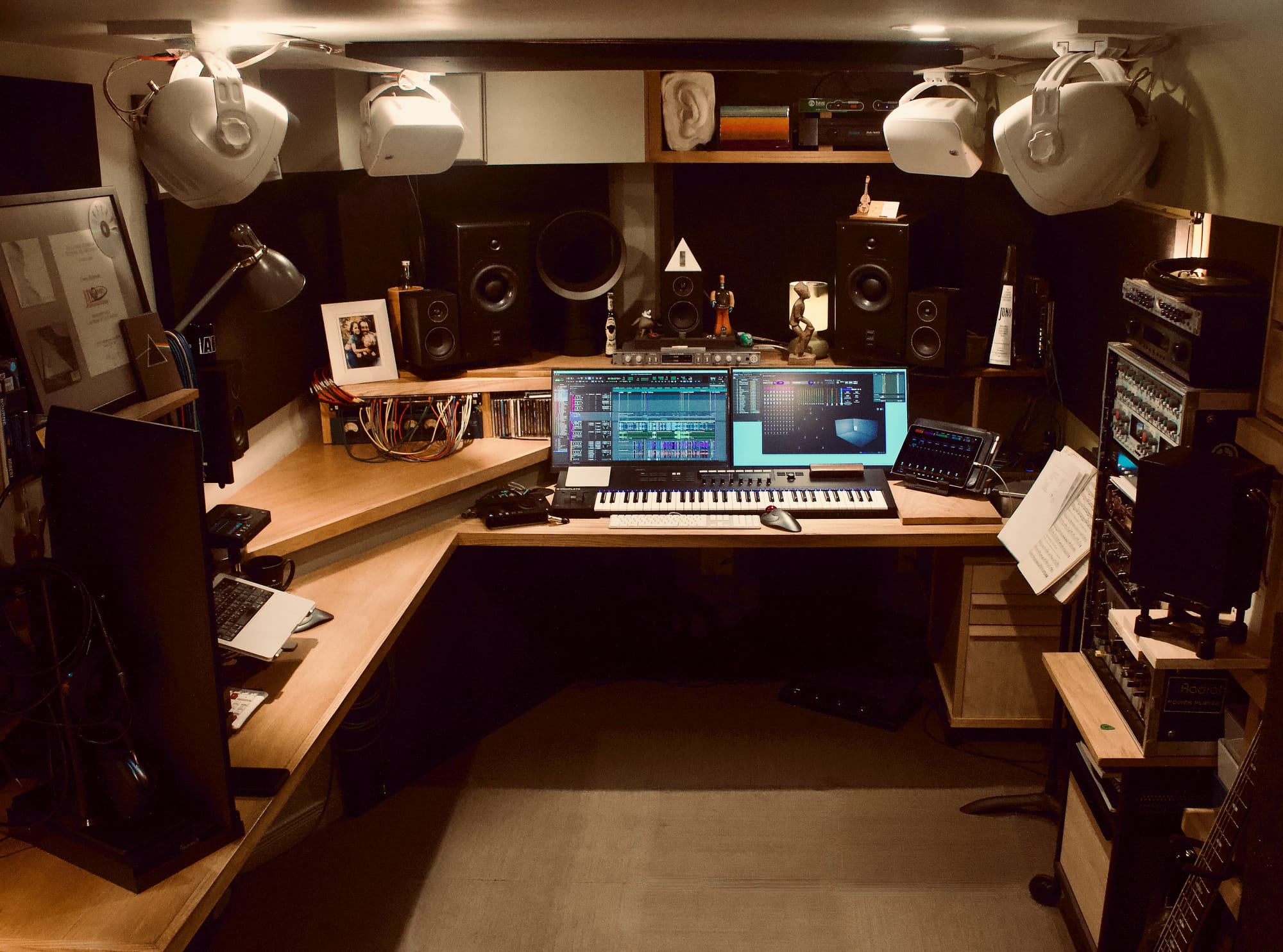
Regarding my researched choice of PSB speakers I learned that we have some great Canadian history which I’d like to share. Dr. Floyd Toole, from Moncton NB, has authored the standard of accepted insight on creating the best listening experience in studio control rooms and he joined Harman International in 1991 as VP of Acoustical Engineering, and in 2007 he became the President of Harman International. In 1965, from the Imperial College of Science and Technology, University of London, UK, Dr. Toole received a PhD for his study of psychoacoustics and how “two ears and a brain result in stereophonic sound localization. PSB speaker founder Paul Barton cites Dr. Toole as his mentor and together in the 70s, they built and refined the anechoic chamber at the NRC in Ottawa. They collaborated at the NRC to come up with the PSB speaker design. As Paul Barton says, “Floyd did the science for PSB speakers, and I implemented it.” That science and engineering is embodied in PSB Speaker design, which espouses their shared philosophy for a tonally balanced and natural sounding loudspeaker. As I was reading Floyd's book, I learned that the PSB Alpha 3 speaker is marvelously efficient with natural tonality, available in a small size, and offered a price point that was perfect for my HN-FTS purpose. I also have 2 ATC SCM 20PROASL reference monitors but the tonal balance of the passive and ported PSB speakers is so good that I often only turn on the ATCs for refined spectral quality control, I love their mid-range detailed sound.
The concept of a Tiny Studio is something that occurred to me while examining the global Tiny Home movement. Those philosophies involve premium quality, large scope operation within a small scale. Tiny homes offer stylish and premium affordances in small spaces; it seemed like a logical fit. I asked myself, “why not apply this thinking to a sole creator Dolby Atmos control room?” Then Dave Dysart introduced me to Merging Technologies, Anubis and HapiMKII. Now, with this system I’ve constructed an audio network where I can pitch and catch between 2 computers with 28 A/D inputs, 42 D/A outputs, and 128 virtual audio channels. So that's why I call this studio a “premium” Atmos room—the sound is premium with cutting edge form and function while mix transferability between other calibrated Atmos studios very reliable. So, you know, I don't necessarily want to endorse any one manufacturer above another, but I found that for my purpose, Merging Technologies with PSB speakers offered the best solution. Now, Merging Technologies hardware is not inexpensive stuff, but it's extremely well-made equipment, and as you’d expect from Swiss engineers, the AES67 PTP clock delivers the highest level of low-latency timing correlation possible. I now have 3 Anubis and one HapiMKII. Next up for the HN-FTS is Canadian made Bryston power amplification; James Tanner and I have discussed beta testing a new multi-channel amp design in the HN-FTS. I can’t wait for that!
Jim Norris
In your quest for gear, over the years, one of the people that have helped you is Dave Dysart, formerly with YSL Pro. Having people like Dave out there really helps you so that you can go to them and say, “Okay, what do you know, what should I do? Where do I spend my money? Where do we get the gear?”
Paul Novotny
Yes—professional audio practitioners and studio owners need well informed sales specialists who bring a highly personal approach with attention to service—it’s a deadline-oriented industry and Dave has saved me many times. I remember the day, I walked into Long and McQuade Pro back in 2020, just before the pandemic; I told Dave my vision for the HN-FTS and at that time, I was struggling to understand what hardware was available in the marketplace. Dave immediately understood and said, “I think your solution may be this;” — he handed me an Anubis. I asked, “what is this?” He gave me an operational rundown and I said, oh my gosh, I've never seen such a powerful and small device. I was amazed at what it could do so I did my homework and believe me, I was not even aware of the audio over internet protocol (AOIP), I was using UAD Apollo interfaces, which were connected via Thunderbolt, but to move to ethernet, well, it just seemed like the future had arrived.
Merging Technologies hardware is used in many premium audio mastering and broadcast facilities worldwide; The Chicago Symphony Orchestra has been using Merging Technologies software and hardware for years; it’s the most advanced audio hardware that I’ve ever worked with. I master audio as well because I have an independent record label. I learned to be a mastering engineer with practice and research, and I then got my Apple Digital Music Certification for MFiT audio, and now I teach mastering at Centennial College. So yes—a steep learning curve is involved with Merging hardware, but once you know it, the myriad possibilities for audio network configuration becomes breathtaking. I receive excellent support directly from Merging in Switzerland and there is a well-established high-end user base worldwide. The sound is pristine and now with Sennheiser acquiring Merging Technologies I’ve been assured that the Merging Technologies ecosystem is on a path to even better support with solid firmware and software updates. Merging Technologies have taken a strong interest in my Hyper Near-Field Tiny Studio, and they profile it on their website.
Jim Norris
So with all your experience and what you've done, what advice would you give to your students or up and coming audio producers as far as their career - a combination of technical and business advice?
Paul Novotny
That's a great question. Today so many things are either fueling or disrupting careers in the media arts so being uber-aware of the trade winds of change is essential. Obviously, everyone is talking about generative Artificial Intelligence and copyright, so I’d advise students to join industry organizations as these groups are interfacing with governments regularly and often publishing the latest updates. If you want to be a screen media composer join the Screen Composers Guild of Canada, SCGC; if you are a songwriter join SOCAN. If you want to be a recording engineer join the AES and attend conferences to meet people.
In Canada you must be diversified as our domestic cultural ecosystem is comparatively small to others. Earlier I mentioned my friend Greg Wells, and I was just watching a video that he did for McDSP. He talked about some advice that he’d received as teenager. In his youth Greg studied music rigorously, he listened to records and learned who made those records. He learned the location of where the music was being made. And here it is as Greg says it, “once you understand where the greatest music that you want to participate in is being made, go there.” That is what he did and that’s good advice.
However, some people will elect to stay in Canada as I did, because I just felt like this is a great country and I did not want to live in the USA. Toronto was the place I wanted to live, and I was confident that I could achieve my life goals in Canada. If you learn to play a high level anywhere in the world, that value endures for your entire career. In Toronto we've got many local communities with vibrant music scenes like Hirut Jazz Café. I see and participate in lots of activity there. I play the bi-monthly Wednesday night jam sessions with guitarist David Occhipinti, hosted by legendary drummer Terry Clarke. This is where experiential learning is readily available. Sure, get your formal education but balance it with experience. So, if you are a student of music in Toronto, come and play music with us at Hirut Jazz Café.
Jim Norris
How do you balance all the different parts of your life. What's your secret to time management,
Paul Novotny
When I was younger, I would start my days at six in the morning and finish later at night, that gets harder to do as you get older. I always used lists to organize my day starting with practicing both electric and upright bass, followed by organizing and prioritizing the everchanging daily business files on my desk. However, I learned that pure creative days are important. There is something special about designating a day to be an unstructured creative day, that’s when an exhilarating flow state can be found. I learned that creative days must occur often as they float your spirit. Always feed your daily motivation with creativity, it defines and energizes you.
The responsibilities of having a family cannot be overlooked, I'm lucky to have a tremendous wife and kids who have over the years been very understanding while I obsessed about projects and deadlines. As artists, we must be obsessive about what we do; you don't get to be good unless you obsess. So, it's a healthy obsession as I see it.
To close, I would suggest, “identify your passion early in life,” and get focused on it, be organized about what you spend your time on, but mostly understand the music business is a service and people industry. This has worked for me, and I’ve been fortunate to maintain many client relationships that last over 20 years. I currently have an advertising client that I work with regularly and that relationship is approaching 25 years of reliable, respectful, and pleasing work—very unusual for the communications business! Long term relationships indicate that you can work well with people. You always must find your people, but when you find someone who you can work with easily, respect that person and the relationship, nurture it and keep it going—it will keep you going! This is the most essential context that I can share; as David Byrne says, “context always determines creativity.”
Website: https://www.paulnovotnymusic.com/
Linkedin: https://www.linkedin.com/in/paul-novotny-1832b35/
Triplet Records website: https://www.tripletrecords.com/about
Industry Feedback:
Dave Dysart
Formerly Director of Sales, YSL Pro, Toronto
“Paul Novotny is a long-time friend and client of mine. He hits the ball out of the park in so many ways. Extremely talented musician, (one of Canada’s top bass players). Great engineer, Music Producer, Audio-Post and Certified Apple Digital Mastering Engineer and Teacher. An innovative studio designer. His Dolby Atmos Hyper Near-Field Tiny Studio will be an awesome game changer in the World of Atmos mixing. And to top it all off - he’s a lovely Human Being. Pleased and proud to be his friend!”
Ed Segeren
Immersive Audio Electro Acoustic Engineer—Toronto, Los Angles, New York
“After attending an AES lecture given by Paul regarding his Dolby Atmos Hyper Near-Field Tiny Studio, I approached him to see if he would be open to having me come by with my SMAART measurement rig so we could perform some testing. A date was selected, and I soon had my first look at the studio. Having spent decades working in large mixing rooms designed for theatrical and TV mixes, I was now setting up my test gear in a room that was about the size of a typical bedroom.
Initial measurements showed that levels and EQ curves were well within Dolby's recommendations. We made a few very minor changes with speaker placements and LFE levels, then performed a complete EQ of the room. With the measurements now done, it was time to sit back and listen to the results. Hours later, it was clear that Paul's research and hard work had resulted in the creation of a fabulous sounding room. Additional testing was accomplished by taking his mixes to other Atmos rooms in town to verify that they sonically matched, which clearly proved to be the case. Furthermore, other mixers have come to listen to Paul's room, and all have been thrilled with what they've heard.
Paul's ability to design and build a proper Atmos mixing room in such a small space allowed him to reduce the construction and capital costs, while maintaining a level of audio quality that is commensurate with much larger and more expensive facilities.
As the popularity of immersive audio continues to grow, I expect to see several mixing rooms like Paul's in the future, now that we know they can be successfully built within the reach of many more content creators.”
Joe Sealy
Musician, business partner
“I have known Paul Novotny since the early ‘80s as an exceptional bassist and a friend. As time went on, I got to know him as a fine record producer, composer, arranger, and collaborator. Together as co-leaders we released 5 CDs on our co-owned record label Triplet Records and achieved 2 Juno nominations. With Paul’s musical oversight and production expertise I won a Juno Award for my Africville Suite recording in 1997. His deftness is wide-ranging, and he continues to grow as a bass artist, music producer, composer, arranger, orchestrator, engineer, educator, author, and most recently as a researcher and innovator with his internationally acclaimed work on the Dolby Atmos Hyper Near-Field Tiny Studio. I feel very fortunate that our friendship is everlasting and that we still collaborate on a great many projects to this day.”
Dr. Rob Bowman
Grammy Award winning ethnomusicologist, York University, Toronto, Canada
An accomplished musician, composer and producer, Paul Novotny came to York University in 2015 to study composition in our Master’s program. Despite an Award-winning professional career, Novotny was driven to continue exploring new avenues that would fuel his compositional palette. As part of his degree work, Novotny composed a suite for jazz orchestra entitled “Humansonics” and wrote an innovative thesis, Compositions Inspired by Anthropological Human Universals.
I met Novotny in the spring of 2018 when he decided to pursue a Ph.D. in musicology. By the end of his first term, he had presented an academic paper at The Art of Record Production conference in Stockholm. The paper was published in the conference journal and discussed stereo to 5.1 surround foldouts using a recording Novotny recorded and produced with Oscar Peterson protégé Robi Botos titled Look Ahead.
During his doctoral studies, I had the pleasure of teaching Novotny in two of my seminar courses and subsequently was honored when he asked me to supervise his comprehensive exams and dissertation.
Quite simply, Novotny is one of the most mature graduate students I have ever had the pleasure of teaching. He was far and away the best student in my graduate seminar on "Approaches to the Study of Popular Music." He constantly animated the class with his insightful and prescient contributions to discussion. His in-class presentations reflected a depth of engagement with both written and musical texts that was inspiring and set the bar very high for other student's presentations. An assiduous reader, he has an impressive array of theoretical materials at his disposal, yet he is one of those rare students who, the more he knows, the more he realizes there is yet to learn.
His proposed dissertation on creating a 7.1.4 Hyper Near-Field Dolby Atmos Tiny Studio promises to make an innovative contribution to both the professional world of recording and to the musicological literature on the recording arts.”
